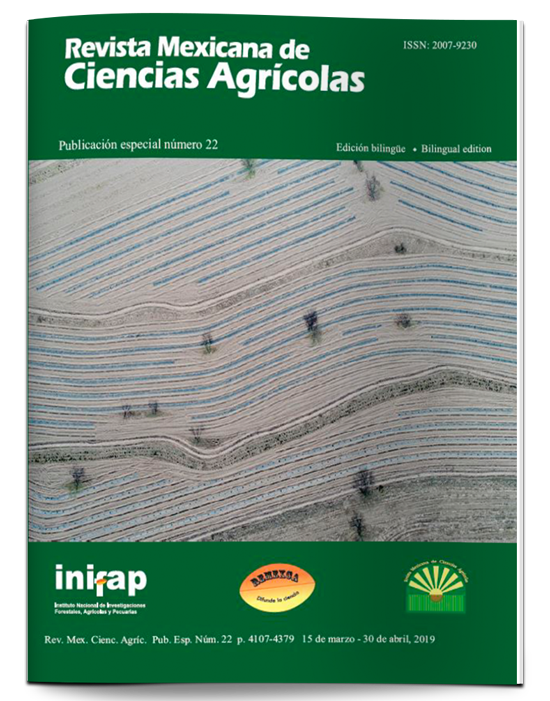Callose and reactive oxygen species expressed in sugar cane leaves by mechanical damage of spittlebugs
DOI:
https://doi.org/10.29312/remexca.v0i22.1862Keywords:
cell death, ERO, fluorescence, hemipterans, wavelengthAbstract
Spittlebugs is considered the main pest insect in sugar cane, this due to mechanical damage caused by the insertion of its stylet in the leaves. This research is focused on the response of the plant to the presence of said hemiptera, which involves the production of callose expressing β-glucans and high presence of reactive oxygen species (ERO) with the reaction of peroxides. These cause cell deaths in the damaged area and limit cell damage. In this document, the presence of callose and ERO is expressed in sugarcane seedlings subjected to spittlebugs infestations. The tissues of the damaged leaves were treated with fluorescent dyes such as aniline blue fluorochrome that adheres to the (1-3) β-glucans of the callose and the CM-H2DCFDA that binds to the intracellular glutathione of ERO by the presence of peroxides. This expression was measured in nanometers based on the intensity of fluorescence expressed by the presence of β-glucans (700 to 7 000 nm) and peroxides expressed between 1 000 to 6 400 nm. These results reveal the real damage caused by the insect’s stylet on the leaf and its effects on the surface and inside the leaf.
Downloads
Downloads
Published
How to Cite
Issue
Section
License
The authors who publish in Revista Mexicana de Ciencias Agrícolas accept the following conditions:
In accordance with copyright laws, Revista Mexicana de Ciencias Agrícolas recognizes and respects the authors’ moral right and ownership of property rights which will be transferred to the journal for dissemination in open access. Invariably, all the authors have to sign a letter of transfer of property rights and of originality of the article to Instituto Nacional de Investigaciones Forestales, Agrícolas y Pecuarias (INIFAP) [National Institute of Forestry, Agricultural and Livestock Research]. The author(s) must pay a fee for the reception of articles before proceeding to editorial review.
All the texts published by Revista Mexicana de Ciencias Agrícolas —with no exception— are distributed under a Creative Commons License Attribution-NonCommercial 4.0 International (CC BY-NC 4.0), which allows third parties to use the publication as long as the work’s authorship and its first publication in this journal are mentioned.
The author(s) can enter into independent and additional contractual agreements for the nonexclusive distribution of the version of the article published in Revista Mexicana de Ciencias Agrícolas (for example include it into an institutional repository or publish it in a book) as long as it is clearly and explicitly indicated that the work was published for the first time in Revista Mexicana de Ciencias Agrícolas.
For all the above, the authors shall send the Letter-transfer of Property Rights for the first publication duly filled in and signed by the author(s). This form must be sent as a PDF file to: revista_atm@yahoo.com.mx; cienciasagricola@inifap.gob.mx; remexca2017@gmail.
This work is licensed under a Creative Commons Attribution-Noncommercial 4.0 International license.



